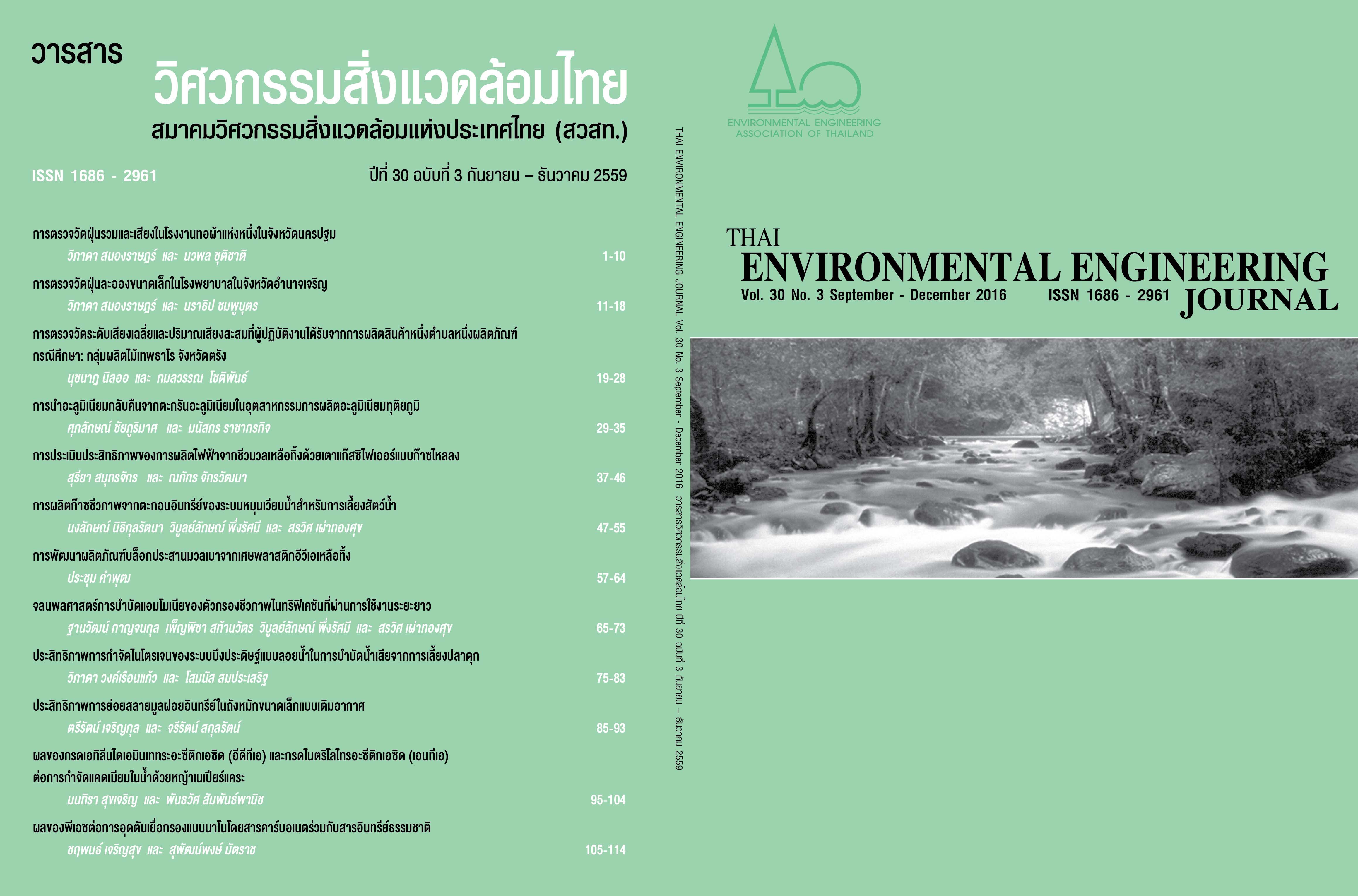Effect of Ethylene Diamine Tetraacetic Acid (EDTA) and Nitrilotriacetic Acid (NTA) on Cadmium Removal by Hydroponics with Moff Dwarf Napier Grass (Pennisetum purpureum CV. MOTT)
Main Article Content
Abstract
The effects of ethylenediaminetetraacetic acid (EDTA) and nitrilotriacetic acid (NTA) on cadmium removal by hydroponics with Moff dwarf napier grass (Pennisetum purpureum CV. MOTT) were studied. The experimental design was separated into 5 groups: 1) uncontaminated water (control). 2) contaminated water without addition of chelating agent (control). 3) contaminated water with EDTA addition in the ratio of 1:0.5 and 1:1 mole. 4) contaminated water with NTA addition in the ratio of 1:0.5 and 1:1 mole. 5) contaminated water with both EDTA and NTA addition in the ratio of 1:0.5 and 1:1 mole. Plants and water samples were collected at 1, 15, 30, 45, 60, 75, 90 and 105 days, respectively. Cd levels in contaminated water and two parts of the plant: shoot (stem and leaves) and root were analyzed by AAS. Results showed that Cd accumulation in root in all experimental groups was higher than Cd accumulation in shoot. Cd concentration in plants grown in contaminated water with EDTA and NTA addition was higher than that in the control groups. It indicates that EDTA and NTA addition increases cadmium uptake by Moff dwarf napier grass. The highest Cd concentrations of 889.31 and 638.98 mg/kg at 30 days were found in root with EDTA and NTA, respectively. The highest Cd concentrations of 256.97 and 255.25 mg/kg at 30 days were found in shoot with EDTA and NTA, respectively. Therefore, it can be implies that EDTA had greater effect on cadmium uptake than NTA.
Article Details
References
[2] USEPA. 1996. Microwave assisted acid digestion of siliceous and organically based matrices. Method. 3052, Washington D.C., USA.
[3] Synchrotron Light Research Institute. Beamline BL6b Micro X-ray Fluorescence. [Online]. 2012. Available from: http://www.slri.or.th [2016, March 20] (in Thai)
[4] Wójcik, M., Vangronsveld, J. and Tukiendorf, A. 2005. Cadmium tolerance in Thlaspi caerulescens: I. Growth parameters, metal accumulation and phytochelatin synthesis in response to cadmium. Environ. Exp. Bot. 53(2): 151-161.
[5] Kongmuang, K. and Sampanpanish, P. 2010. Effect of EDTA and Citric acid on cadmium uptake by water Hyacinth. Mae Fah Luang symposium on the occasion of the 12th anniversary Mae Fah Luang university following the legacy of H.R.H. the Princess Mother. Chiang Rai, Thailand. (in Thai)
[6] Lai, H. Y. and Chen, Z. S. 2004. Effects of EDTA on solubility of cadmium, zinc, and lead and their uptake by rainbow pink and vetiver grass. Chemosphere. 55(3): 421-430.
[7] Hseu, Z. Y., Jien, S. H., Wang, S. H. and Deng, H. W. 2013. Using EDDS and NTA for enhanced phytoextraction of Cd by water spinach. J. Environ. Manage. 117: 58-64.
[8] Lombi, E., Zhao, F. J., Dunham, S. J. and McGrath, S. P. 2001. Phytoremediation of heavy metal–contaminated soils. J. Environ. Qual. 30(6): 1919-1926.
[9] Sampanpanish, P. 2015. Phytoremediation. Chulalongkorn University Printing House, Chulalongkorn University. (in Thai)


